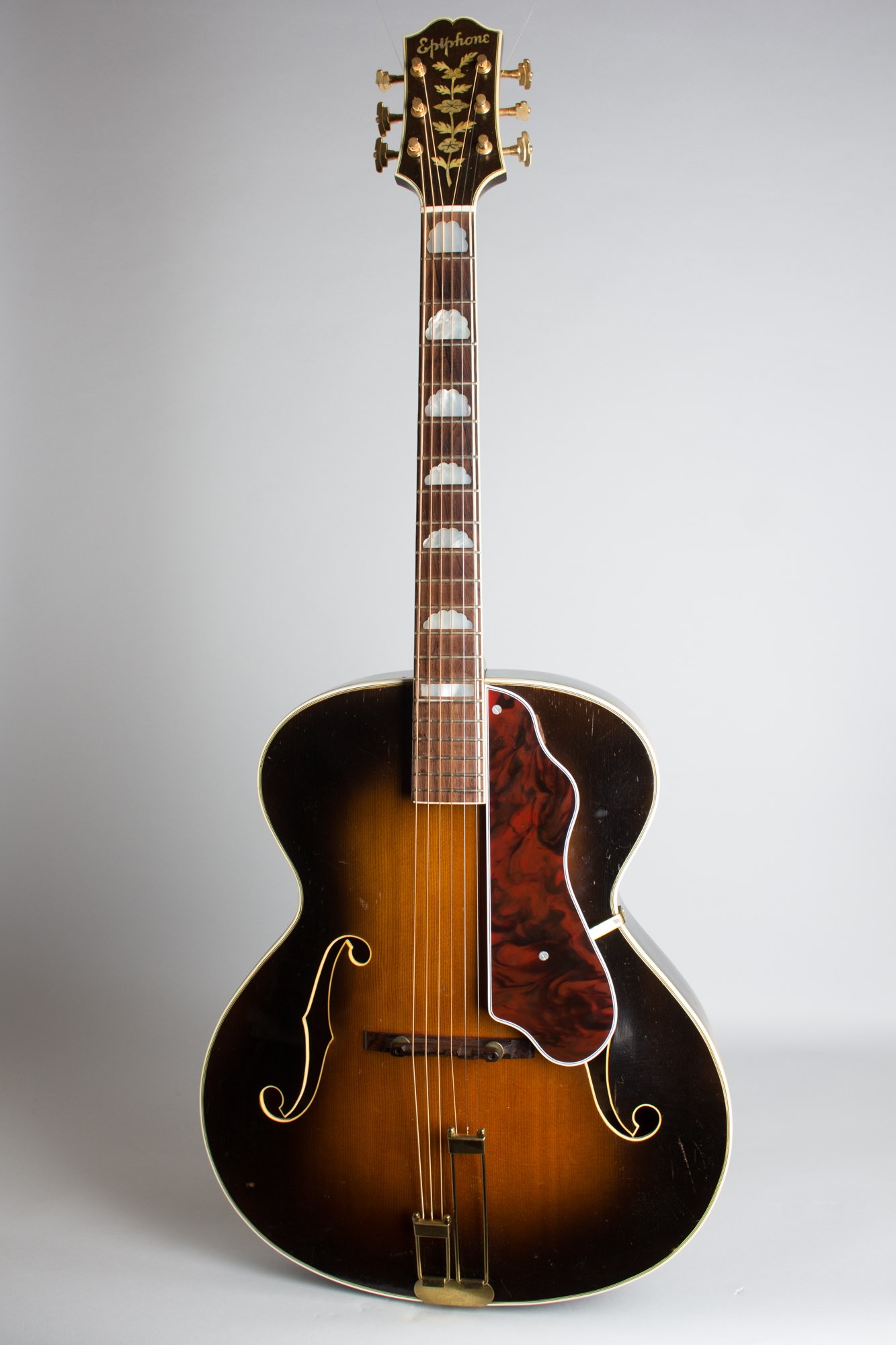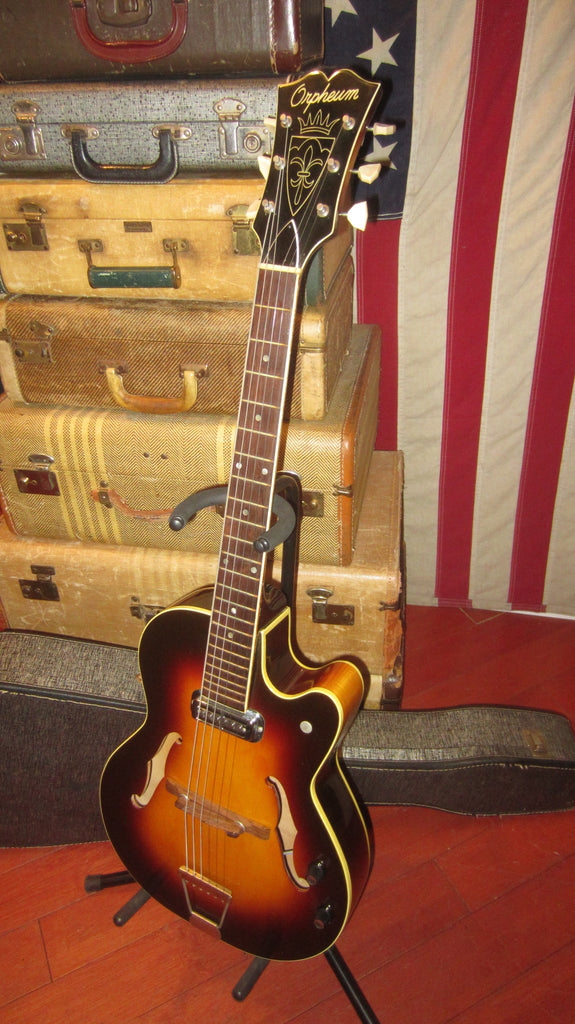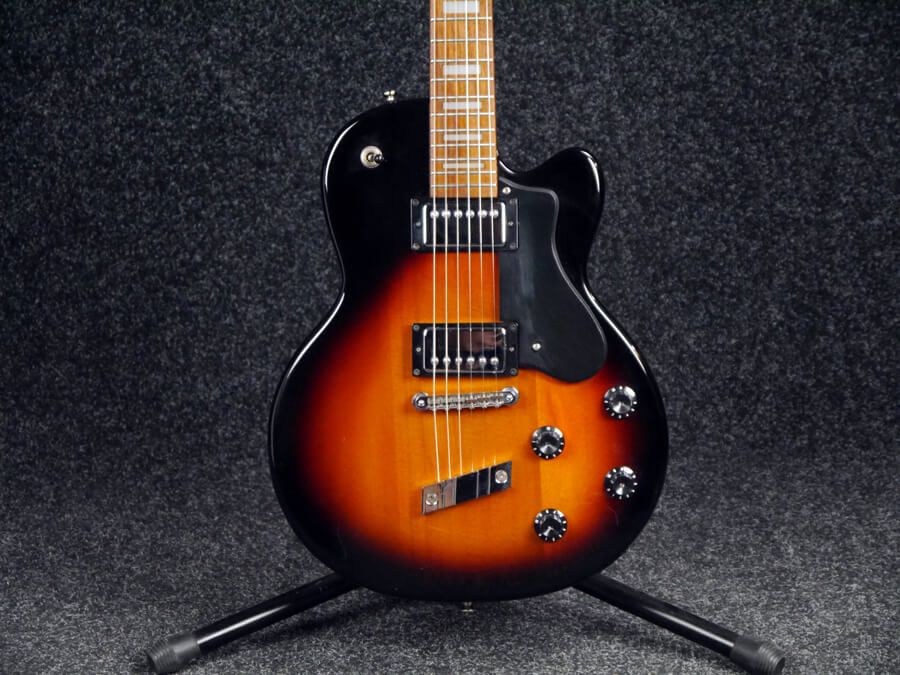

A separate V & T (Volume & Tone) controls box, hardwired to the pickup head, is screwfixed directly into the guitar’s top, terminating in a mini-jack socket. The fixing arrangement is as for Model 41 above. Model 55 Attachable chrome pickup with four black-filled slots and six individually adjustable pole-pieces, for archtop guitar with separate controls box, both screwfixed directly into the guitar’s top. This bezel is designed to follow the contour of the archtop body, or sit flat (see photo No. It has an integral chrome bezel and is screwfixed to the front face of the guitar. This is a basic bar magnet pickup, similar to the plain ‘Hershey Bar’ type. Model 41 Attachable chrome pickup with no visible pole-pieces and four black-filled slots, for archtop or flat-top guitar. The example shown above has two black, cylindrical, tapered knobs and mini-pots with 1/8″ Dia. A separate V & T (Volume & Tone) open-backed controls box, hardwired to the pickup head, is screwfixed directly into the guitar’s top (Ouch again!), terminating in a mini-jack socket. The pickup’s top cover is rivet-fixed through the bar magnet to the pickup’s steel baseplate.

This is a basic bar magnet pickup, similar to the plain ‘Hershey Bar’ type, positioned within the soundhole and is screwfixed to the front face of the guitar through two tabs (Ouch!).

Model 40 Attachable pickup, chrome-finished with no visible pole-pieces and four black-filled slots, for flat-top roundhole guitar. For example, Kay’s 1963 catalog shows twelve DeArmond products, including the Model 1000, which is shown there as item No. Some re-sellers who produced their own catalogs used their own numbers when marketing DeArmond pickups. Both pickups have chrome covers and individual adjustable pole-pieces. Just one example of a partly-assembled FP-12 has been seen, but not in Fender’s literature to date. The Model FP12 has the edgewise volume and tone controls visible through slots within the pickup’s chrome cover. It has also been seen in a 1960s Fender catalog. The Model FP-6 has the edgewise volume and tone controls at the outer edges of the pickup’s chrome cover and several of these pickups, packaging and installation instructions have been seen. Two pickups listed below, Models FP-6 and FP-12, were packaged and marketed as Fender products exclusively in the 1960s.

These pickups are so named because some existing examples have one of the above numbers stamped on their underside, in addition to the company name. The base of the bezels can be either flat or slightly curved to allow for the contours of an archtop guitar body. Four different heights for the bezel have been recorded so far. The only difference found between these pickups appears to be the method of securing the pickup itself in the bezel. Rarer still, with only one example seen to date, is the Model 6813, which appears the same as the 6812. Another pickup listed below, the much rarer Model 6811, appears identical to the 6812 above. The Model 6812, a four-scroll (moustache) pickup with a white plastic bezel, was fitted in many Harmony guitars. Two pickups listed below, models 67, were packaged and marketed as Harmony products in Harmony catalogs, but not in DeArmond’s own catalogs or price lists. Unfortunately the iconic models such as the Rhythm Chiefs 1000, 1100, the RHC-B and FHC-C did not appear in this catalog, as they had been discontinued by this time. The company did not disclose any technical data on their products until the release of their 1980 green catalog No, 80, which included some information on each of their then current pickups and pedals. ĭeArmond did not market any fretted Bass pickups under their own name. Where known, these numbers are included below. The model numbers for other pickups produced for musical instrument manufacturers including D’Angelico, Eko, Epiphone, Emmons, Fender, Gretsch, Bacon Belmont, Guild, CMI (Chicago Musical Instruments), producers of Harmony, Airline, Alden, Barclay, Heathkit, Holiday, Monterey, Regal, Sears-Roebuck, Silvertone, Truetone and others), Hofner, Kustom, Levin, CF Martin, Messenger, Micro-Frets, Orpheum, Ovation, Premier, Rickenbacker and Standel (including Harptone and Koontz) are, with very few exceptions, not generally known. These items are listed below, using DeArmond’s own numbering system. This page last updated September 27, 2020.Įvery DeArmond product – musical instrument pickups, effects units, amplifiers and spare parts – sold to the public through music outlets and distributors was given a specific reference number.


 0 kommentar(er)
0 kommentar(er)
